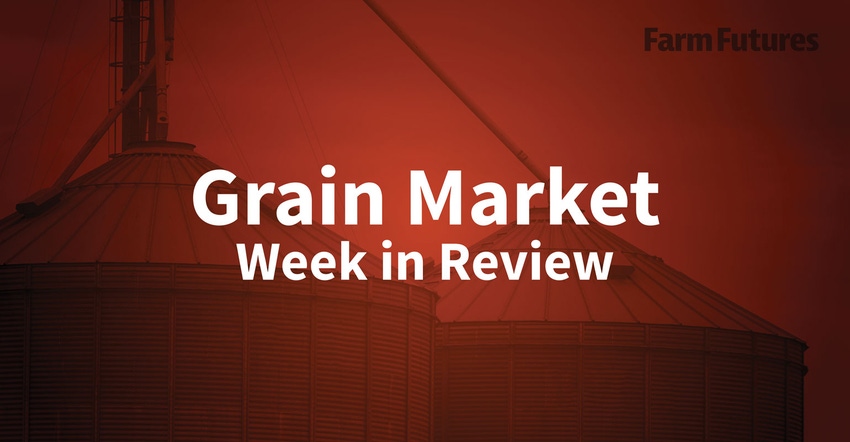May 14, 2021

Missed some market news this week? Here's what Ben Potter, Jacquie Holland and our Ag Marketing IQ bloggers have been writing about.
Ag Marketing IQ
The recent rally in the market on both old crop and new, has given producers the opportunity to make profitable sales. Producers I work with use put options to provide a floor while remaining bullish to upside moves in the market. However, there are times when there is a fair amount of slippage between the current futures price and the strike price where the put options reside. When we see this type of slippage, it is often a signal that we should feed the rally and market some bushels and protect with call options in case the market continues to work higher.
A massive injection of money from the Federal Reserve and COVID-relief legislation fueled concerns inflation may be ready for a restart after more than 30 years of mostly falling prices. Nonetheless, the Fed maintains any inflation now is temporary, caused by short-term supply chain disruptions from an economy roaring back to life after the pandemic. Inflation, it seems, is in the eye of the beholder. While consumers watch their bills at the gas station and supermarket, the Fed focuses on labor costs, which stayed persistently weak in the wake of the Great Recession a decade ago.
Corn and soybean futures prices remain in a solid uptrend with more volatility expected. With the ending stocks story still supportive for both old and new crop, a large price setback seems unlikely at this time. Yet, there is little fresh news to suggest that prices need to continue their buying bonanza. Range trade might be the theme for the coming weeks.
The mood of the market coming into this past week was at a fevered pitch. With a sharp rally for both corn and beans that made producers second-guess profitable sales on a daily basis, we were bound to see a setback. While the May WASDE report was expected to be friendly, that should be no surprise; that expectation has ruled the roost for the last few weeks. Any time we come into a report with one-sided expectations, the potential exists for a less-than-stellar reaction, no matter the data. What’s next, moving forward?
Exports
The latest batch of grain export inspection data from USDA, covering the week through May 6, held mixed but mostly positive numbers for traders to digest. Although corn volume saw a moderate week-over-week decline, cumulative totals for the 2020/21 marketing year still increased its already commanding lead over last year’s pace. And soybeans and wheat each saw modest week-over-week improvements.
The 2020/21 marketing year is slowly winding down. This week's export sales recap from USDA, covering the week through May 6, was a fresh reminder of that fact, especially when looking at corn exports. Old crop sales fell to a marketing-year low, while new crop sales pushed total volume near the higher end of trade guesses. Soybean and wheat sales were mostly lackluster last week.
Export sales were reported every day this week. China made purchases on four days and Mexico on one. All sales were corn. In total, China took 147.3 million bushels of corn and cancelled 11 million bushels.
Crop progress
Weather was cooperative enough this past week to help push the pace for both corn and soybean plantings according to the latest report from USDA, released Monday afternoon. Corn surpassed another milestone, reaching the two-thirds mark on the 2021 planting season, and more than 4 of every 10 soybean acres are now in the ground for the week ending May 9.
WASDE
New crop corn futures edged lower on reduced demand estimates in the new crop year, largely from a smaller export number, in the May 2021 World Agricultural Supply and Demand Estimates. Old crop soybean futures rose on smaller Argentine production this year and bullish soybean import projections from China. Prospects for a large U.S. wheat harvest this summer sent wheat futures lower following the report’s release.
Podcast
USDA’s monthly World Agricultural Supply and Demand Estimates (WASDE) report typically makes some impact on the grain markets on the day it is released – and the latest report was no exception. Corn and wheat prices slumped lower today, while soybeans climbed another 1.75% higher.
Recaps
Corn prices recovered from yesterday’s selloff overnight, rising nearly 3% in overnight trading as a strong demand outlook and lingering concerns over drought in Southern Brazil and the U.S. increased worries about global supply conditions. Soybeans followed the corn rally higher this morning, with July 2021 futures back within striking distance of the $16/bushel benchmark. Improving prospects for Chinese demand supported the morning’s soybean gains. Wheat prices also bounced back this morning, though traders are continuing to balance strong yield prospects in the Northern Hemisphere with dry weather concerns, specifically in the U.S. Northern Plains and Russia.
Corn prices spilled into the red for a third consecutive session today as traders continue to liquidate a portion of their net long position. Today, May corn futures dropped 34 cents to $6.85, with July futures down 30 cents to $6.4475. Soybean prices showed some recovery after a mixed round of technical maneuvering today in a sometimes choppy session. May futures dropped 8.5 cents to $16.0375, while July futures added 7 cents to reach $15.91. July Chicago SRW futures added 6.25 cents to $7.0775, July Kansas City HRW futures held steady at $6.5775, and July MGEX spring wheat futures picked up 4 cents to $7.4525.
About the Author(s)
You May Also Like




